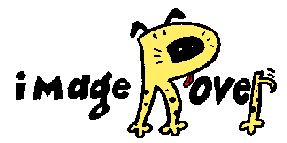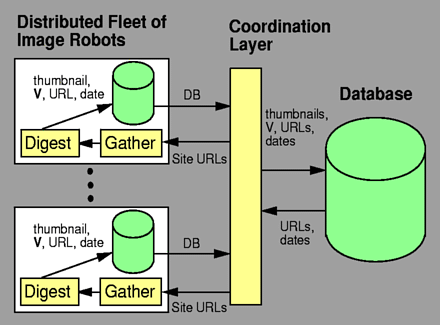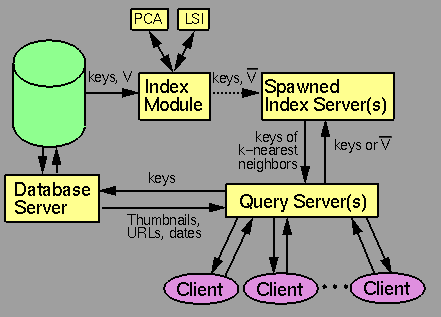Each image digestion module processes an input stream of image URLs. A
reduced resolution image thumbnail is computed for use as an icon during
search. With preprocessing completed, the digestor then executes a series
of analysis submodules that calculate information about the distributions
of visual, textual or other properties associated with the image. Each
submodule except for the text processor computes distributions over
N subimages. In the current implementation, N = 6.
The current implementation of the system includes submodules for analysis
of color, orientation and word associations. The following is a brief
overview of these modules. For more details, readers are directed to [1].
- Color Analysis
Image color histograms are computed in the CIE L*u*v* color space,
which has been shown to correspond closely to the human perception of
color. The color distribution is quantized into 64 bins (4 for each axis)
using a histogram method.
- Texture Orientation Analysis
The texture direction distribution is calculated using steerable pyramids.
For this application, a steerable pyramid of four levels was found to be
sufficient. At each level, texture direction and strength at each pixel is
calculated using the outputs of seven X-Y separable, steerable quadrature
pair basis filters. Orientation histograms are then computed for each
level in the pyramid.
- Text Analysis
The text present in the URL containing a specific image is extracted and
indexed by latent semantic indexing. Words appearing in the URL are
variably weighted according to their proximity to the image under
consideration and their importance in that document. A weighted word
frequency histogram is created for each image.





